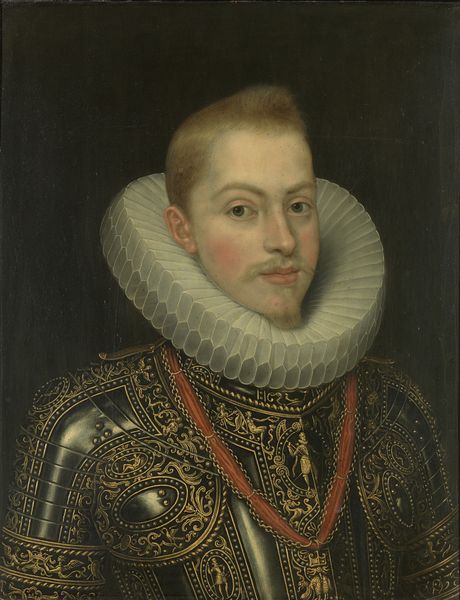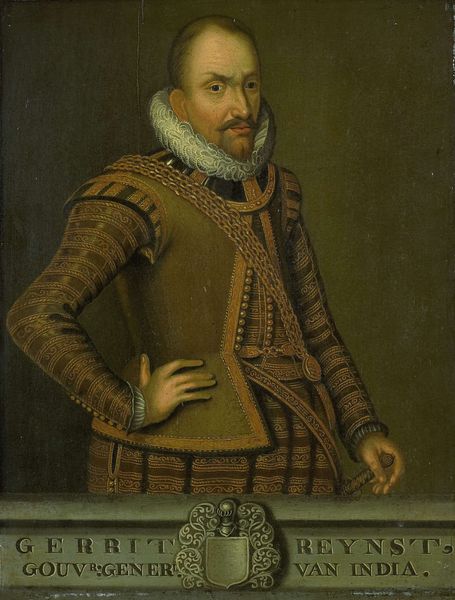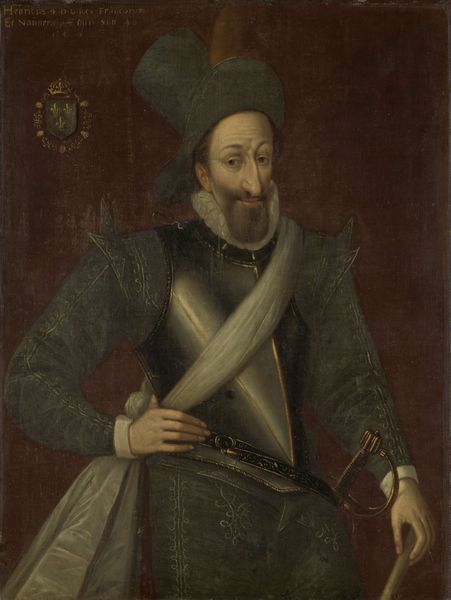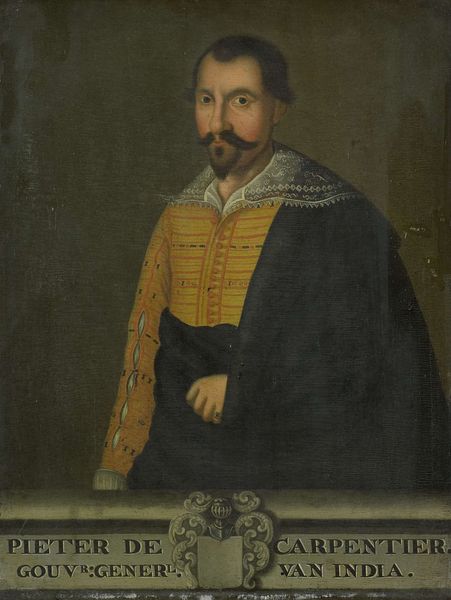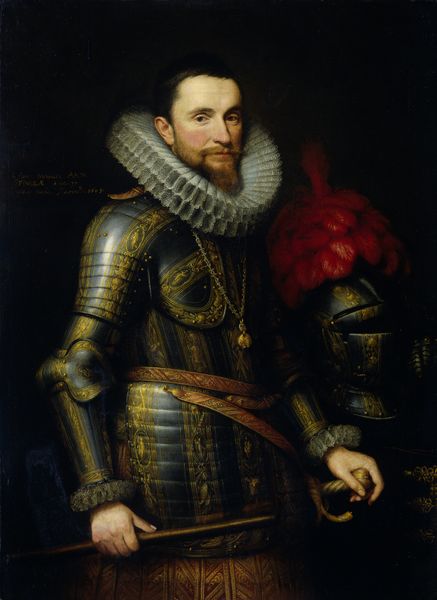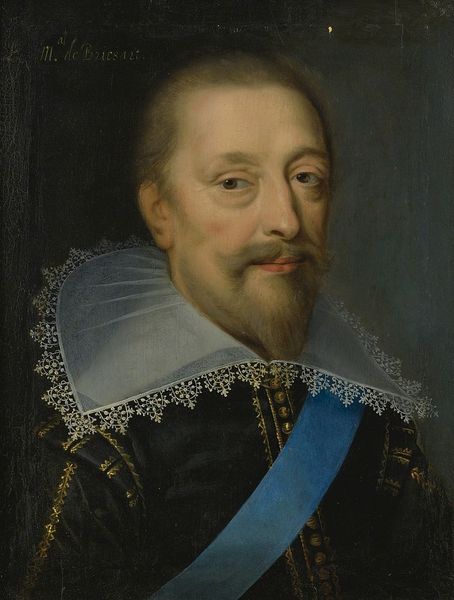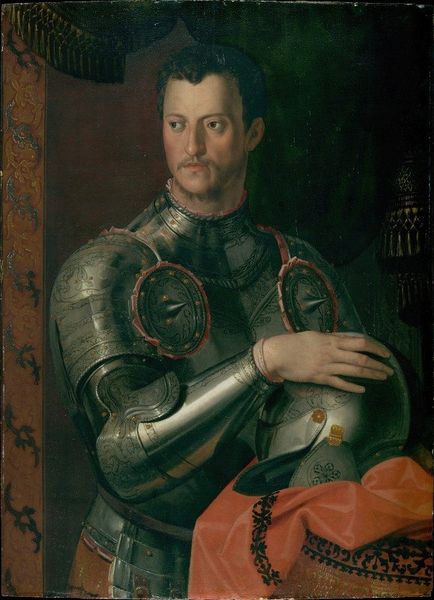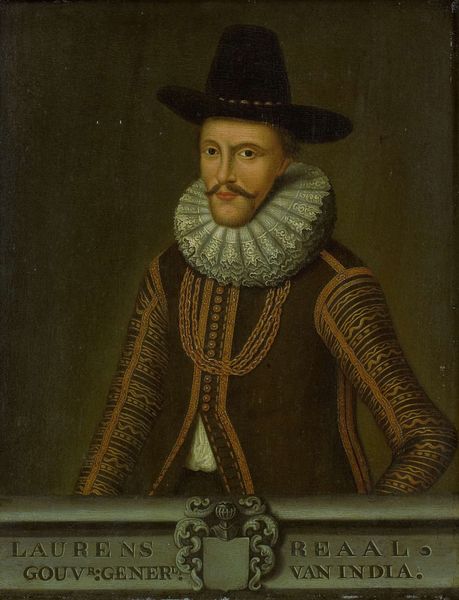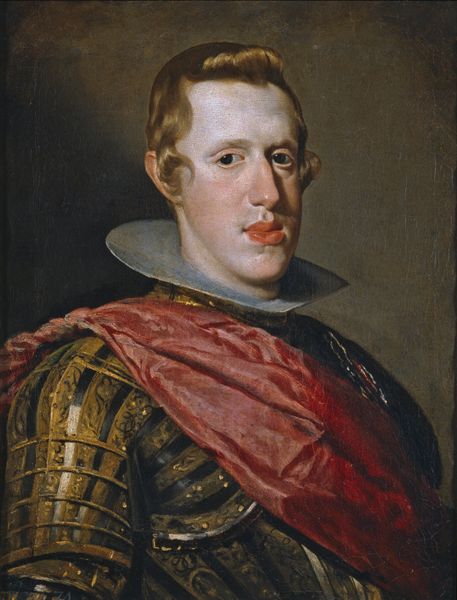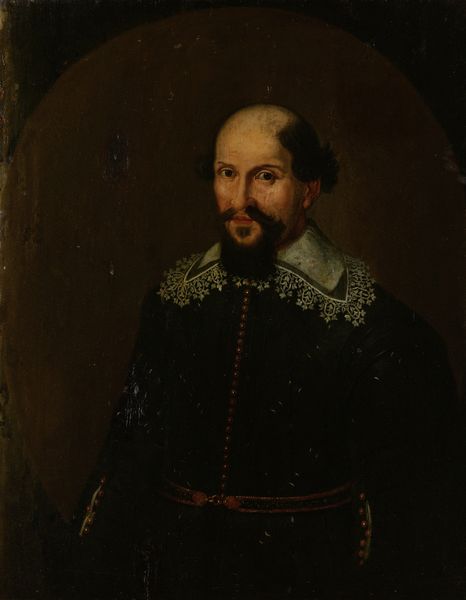
Dimensions: support: 762 x 635 mm frame: 978 x 849 x 94 mm
Copyright: CC-BY-NC-ND 4.0 DEED, Photo: Tate
Editor: So here we have "George Puleston(?)" by John Souch, painted sometime before 1644. There's a formality to this portrait that makes me curious about what he wants us to see. How do you interpret this work? Curator: The formality is a performance, isn’t it? The lace, the gilded doublet—visual markers of status in a society obsessed with appearances. But look at the eyes, the slightly pursed lips. I feel a deep melancholy, a man trapped by the very trappings he displays. What do you think he's trying to hide? Editor: That's a really interesting angle. I was so focused on the showiness of it all! Curator: Portraits often reveal as much about the artist and the era as they do about the sitter. Perhaps Souch sensed this internal conflict and immortalized it. Editor: I'll definitely look at portraits differently now, thinking about what's hidden beneath the surface.
Comments
Join the conversation
Join millions of artists and users on Artera today and experience the ultimate creative platform.
tate 7 months ago
⋮
Souch was a provincial artist who was apprenticed to the heraldic painter Randle Holme of Chester in 1607. His career can be charted from a small group of signed portraits of people from the region around Chester.The sitter was a member of the Puleston or Pilsdon family of Emral on the Welsh border. Above his slashed doublet he wears a black gorget, or piece of throat armour, which indicates that he is an officer. Over this lies a lace collar called a 'falling band' and Puleston grasps its tie-strings in his left hand. Gallery label, August 2004

